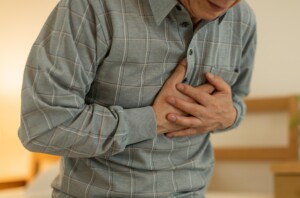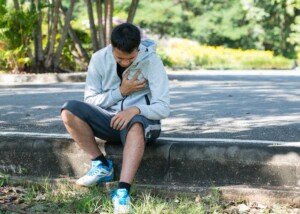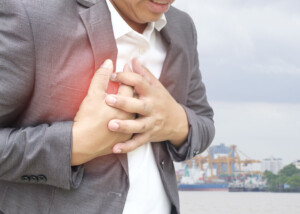If you’re on statins for heart disease, how can you tell the difference between chest pain from the medication and that from your heart condition?
After all, a statin drug can cause pain or carmping in the muscles.
And of course, pain in the chest is notoriously caused by various heart conditions including narrowed coronary arteries as well as an imminent heart attack.
“Statins are medications that are used to reduce the risk of coronary artery disease, stroke or peripheral artery disease,” says Carlos González Quesada, MD, FACC, attending cardiologist with Cedars-Sinai Medical Center and a cardiologist with Cardiovascular Medical Group of Southern California.
“In addition to lowering the cholesterol, they offer other benefits such as decreasing the risk of heart attacks and strokes.
“Although there are some side effects related to the use of statins, these medications are generally safe and well-tolerated by most patients.
“Interestingly, in clinical trials the rate of adverse events is similar in patients taking statins compared to patients who were given a placebo.
“However, in clinical practice adverse events such as muscle pain or soreness are not uncommon.”
Muscle Pain from Statins
If one ever experiences chest pain as a side effect from a statin, this drug would be affecting the muscles in the chest, rather than the heart itself.
Thus, any chest pain from a statin (which would be very rare) is not angina.
“Patients usually describe their muscular symptoms as weakness, tiredness or soreness,” says Dr. Quesada.
“This pain is usually located in the extremities in places such as the shoulders or thighs.
“The discomfort is not always related to activity, and it does not improve with rest.
“It is unlikely for this pain to be present in the muscles covering the chest.”
Chest Pain from the Heart
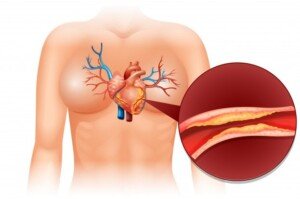
Freepik.com/brgfx
“In contrast, the chest pain caused by coronary artery disease is usually located on the chest, most commonly on the left side of the chest,” says Dr. Quesada.
“This pain is usually described as pressure or tightness. Patients report feeling as if an elephant was sitting on their chest.
“In the setting of a slowly progressing narrowing of a coronary artery, the chest discomfort will develop and progress over several months to years.
“This chest pain is triggered by activities such as walking uphill, climbing stairs, walking long distances, shoveling the snow, etc.”
If it goes untreated, it can progress to the point where the angina (chest pain resulting from inadequate blood flow through the heart) spontaneously occurs during rest. This is called unstable angina.
“The pain can radiate to the mandible, arms, upper portion of the abdomen, or back,” says Dr. Quesada. But it doesn’t always do this. It can be focal – in the chest only.
However, a heart related cause becomes highly suspicious when the pain does radiate.
“Associated symptoms include shortness of breath, dizziness, lightheadedness, nausea or vomiting.
“The chest pain on the associated symptoms quickly improves once the patient stops performing the activity that triggered the pain.
“In the case of sudden and acute occlusion of a coronary artery — a heart attack — the patient will develop chest tightness or pressure, and the symptoms described above over the course of minutes to hours.
“Some patients with a heart attack report a feeling of ‘impending doom.’”
So if you recently started taking a statin and feel a new-onset discomfort in your chest, it is NOT wise to assume that this is a side effect from the drug – especially if the pain is triggered by activity, subsides with rest and isn’t affected by body position.
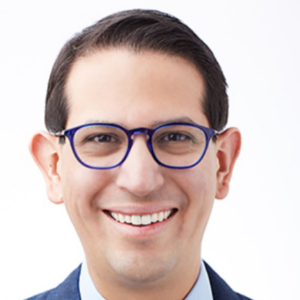 Dr. Quesada is board certified in internal medicine and cardiovascular diseases, with subspecialties in general cardiology plus interventional and structural cardiology. He evaluates and treats many conditions including shortness of breath, chest pain, coronary blockages and clot disorders.
Dr. Quesada is board certified in internal medicine and cardiovascular diseases, with subspecialties in general cardiology plus interventional and structural cardiology. He evaluates and treats many conditions including shortness of breath, chest pain, coronary blockages and clot disorders.
 Lorra Garrick has been covering medical, fitness and cybersecurity topics for many years, having written thousands of articles for print magazines and websites, including as a ghostwriter. She’s also a former ACE-certified personal trainer.
Lorra Garrick has been covering medical, fitness and cybersecurity topics for many years, having written thousands of articles for print magazines and websites, including as a ghostwriter. She’s also a former ACE-certified personal trainer.
.

